Filter by

The digital dialectic: new essays on new media
The Digital Diolectic is an interdisciplinary jam session about our visual and intellectual cultures as the computer recodes technologies, media, and art forms. Unlike purely academic texts on new media, the book includes contributions by scholars, artists, and entrepreneurs, who combine theoretical investigations with hands-on analysis of the possibilities (and limitations) of new technology. …
- Edition
- -
- ISBN/ISSN
- 9780262278645
- Collation
- 1 online resource (xxi, 298 pages) :illustrations.
- Series Title
- -
- Call Number
- -
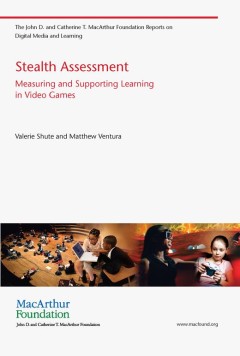
Stealth Assessment: Measuring and Supporting Learning in Video Games
An approach to performance-based assessments that embeds assessments in digital games in order to measure how students are progressing toward targeted goals. To succeed in today's interconnected and complex world, workers need to be able to think systemically, creatively, and critically. Equipping K-16 students with these twenty-first-century competencies requires new thinking not only about…
- Edition
- -
- ISBN/ISSN
- 9780262315210
- Collation
- -
- Series Title
- -
- Call Number
- -
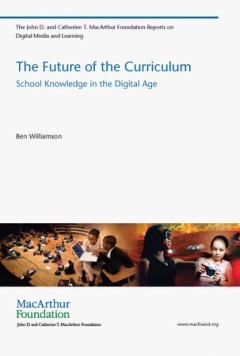
The Future of the Curriculum: School Knowledge in the Digital Age
An examination of curriculum innovations that are shaped by new ideas about digital media and learning. Although ideas about digital media and learning have become an important area for educational research, little attention has been given to the practical and conceptual implications for the school curriculum. In this book, Ben Williamson examines a series of contemporary curriculum innovati…
- Edition
- -
- ISBN/ISSN
- 9780262315180
- Collation
- -
- Series Title
- -
- Call Number
- -
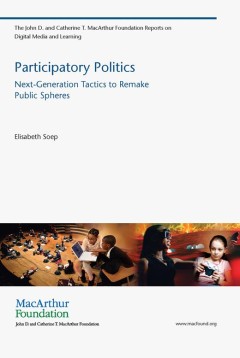
Participatory Politics: Next-Generation Tactics to Remake Public Spheres
An examination of the mix of face-to-face and digital methods that young people use in their experiments with civic engagement. Although they may disavow politics as such, civic-minded young people use every means and media at their disposal to carry out the basic tasks of citizenship. Through a mix of face-to-face and digital methods, they deliberate on important issues and debate with peer…
- Edition
- -
- ISBN/ISSN
- 9780262320207
- Collation
- -
- Series Title
- -
- Call Number
- -
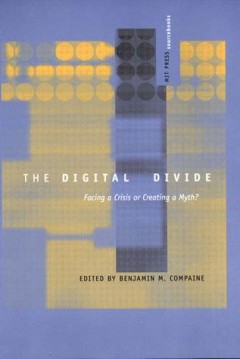
The Digital Divide: Facing a Crisis or Creating a Myth?
Annotation The Digital Divide refers to the perceived gap between those who have access to the latest information technologies and those who do not. If we are indeed in an Information Age, then not having access to this information is an economic and social handicap. Some people consider the Digital Divide to be a national crisis, while others consider it an over-hyped nonissue. This book prese…
- Edition
- -
- ISBN/ISSN
- 9780262287029
- Collation
- -
- Series Title
- -
- Call Number
- -
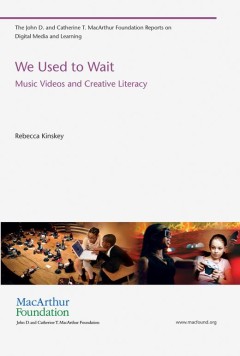
We Used to Wait: Music Videos and Creative Literacy
An investigation of music videos as a form, a practice, and a literacy. Music videos were once something broadcast by MTV and received on our TV screens. Today, music videos are searched for, downloaded, and viewed on our computer screens—or produced in our living rooms and uploaded to social media. In We Used to Wait, Rebecca Kinskey examines this shift. She investigates music video as a …
- Edition
- -
- ISBN/ISSN
- 9780262325479
- Collation
- -
- Series Title
- -
- Call Number
- -
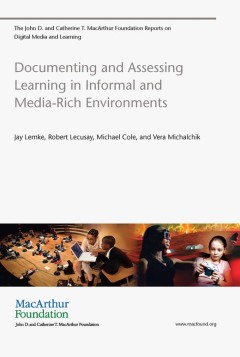
Documenting and Assessing Learning in Informal and Media-Rich Environments
An extensive review of the literature on learning assessment in informal settings, expert discussion of key issues, and a new model for good assessment practice. Today educational activities take place not only in school but also in after-school programs, community centers, museums, and online communities and forums. The success and expansion of these out-of-school initiatives depends on our…
- Edition
- -
- ISBN/ISSN
- 9780262328692
- Collation
- -
- Series Title
- -
- Call Number
- -

Resonant Games: Design Principles for Learning Games that Connect Hearts, Min…
Principles for designing educational games that integrate content and play and create learning experiences connecting to many areas of learners' lives. Too often educational videogames are narrowly focused on specific learning outcomes dictated by school curricula and fail to engage young learners. This book suggests another approach, offering a guide to designing games that integrates conte…
- Edition
- -
- ISBN/ISSN
- 9780262346078
- Collation
- -
- Series Title
- -
- Call Number
- -

Hanging Out, Messing Around, and Geeking Out: Kids Living and Learning with N…
The tenth-anniversary edition of a foundational text in digital media and learning, examining new media practices that range from podcasting to online romantic breakups. Hanging Out, Messing Around, and Geeking Out, first published in 2009, has become a foundational text in the field of digital media and learning. Reporting on an ambitious three-year ethnographic investigation into how young…
- Edition
- -
- ISBN/ISSN
- 9780262354653
- Collation
- -
- Series Title
- -
- Call Number
- -

Digital Libraries
The emergence of the Internet and the wide availability of affordable computing equipment have created tremendous interest in digital libraries and electronic publishing. This book is the first to provide an integrated overview of the field, including a historical perspective, a survey of the state of the art, and an examination of current research.
- Edition
- -
- ISBN/ISSN
- 9780262255653
- Collation
- -
- Series Title
- -
- Call Number
- -
 Computer Science, Information & General Works
Computer Science, Information & General Works  Philosophy & Psychology
Philosophy & Psychology  Religion
Religion  Social Sciences
Social Sciences  Language
Language  Pure Science
Pure Science  Applied Sciences
Applied Sciences  Art & Recreation
Art & Recreation  Literature
Literature  History & Geography
History & Geography